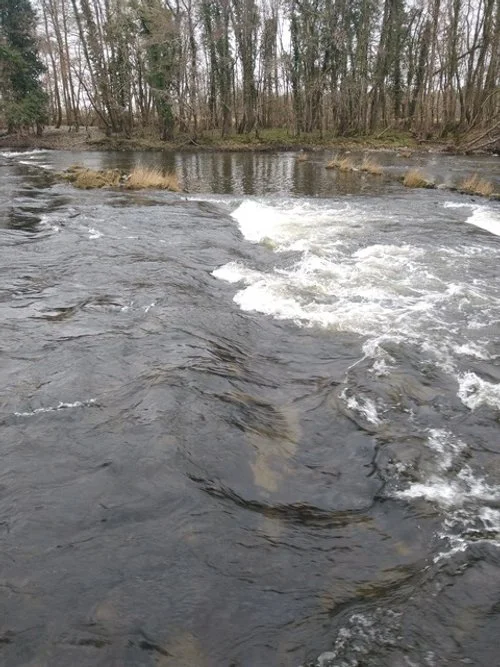Reading long government policy documents sometimes resembles the feeding patterns of the Whale Shark. You need to swallow oceans of print to find the fragments of policy plankton that suggest what is really going on. These are some initial reflections on the UK government’s Plan for Water announced on 4 April 2023, and their implications in particular for England.
The good
The Plan for Water points to progress in some areas. Salmon have returned to the River Don in Yorkshire for the first time in 200 years. This is not the first time that this species has shown a capacity for recovery when real steps are taken to improve its habitat, and it is worth celebrating. The Plan notes that over 72% of bathing waters in England were classified as ‘excellent’ in 2022, up from 51% in 2010. Some micro or single-use plastics have been banned.
The Plan for Water also underlines the government’s response to an issue of huge concern to the public, sewage spills in rivers, by promising significantly higher fines for offending water companies. For really serious and deliberate criminal breaches of water discharge regulation, it might be more effective to seek the disqualification of directors – but the fines are a serious response to a serious problem. Perhaps more significantly, the government has signalled its intention to apply the fines and penalties to environmental improvements. This has not been the case to date with criminal penalties, and it is important and welcome.
The Plan also signals the government’s intention to increase tenfold the number of farm inspections carried out by the Environment Agency. If backed up by real increases in human and financial resources for monitoring and inspection and enforcement for the enforcement body, this would be welcome. Without that, it would not count for much. Effective enforcement of environmental laws starts with political will (which was lacking when last year’s government announced a bonfire of environmental regulations and a regulatory free for all for farmers). Effective enforcement does not necessarily demand numerous criminal proceedings if alternatives can be shown to be equally if not more effective, but consistent regulatory policy and a visible, effective regulator is essential. The Government of Wales could take note, being slightly better at shiny new laws than equipping Natural Resources Wales with adequate resources to do much to enforce them.
The bad
The Plan for Water is one expression of the UK government’s environmental policy for England, but it is not the full story. At the same time, the same government is taking forward the Retained EU Law (Revocation and Reform) ‘REUL’ Bill. This is essentially a massive deregulatory measure, which could revoke 1,781+ environmental laws on 31 December 2023 (Clause 1); or allow for them to be revoked, retained or re-written in whatever way Ministers consider appropriate (Clause 15(3)); as long as that constitutes less of a regulatory “burden” (Clause 15(5)). This is to be achieved with minimal reference to Parliament, and no reference to the public.
In terms of water legislation, this covers critical implementing legislation for the Water Framework Directive, the Bathing Waters Directive, the Urban Waste Water Treatment Directive, the Drinking Water Directive and more. The REUL Bill also downgrades or limits the reference by English courts to EU caselaw, which may affect caselaw interpreting the water Directives, and removes EU principles of environmental law such as the precautionary principle. So you cannot really read the Plan for Water on its own and take it at face value. The government promises robust regulation on the one hand, and wholesale deregulation on the other.
The Plan for Water also concedes that “no surface water bodies” (0%) achieve “good chemical status” “due to 3 persistent pollutants”, mercury, PBDE (used as flame retardant) and PFOS (used as textile stain repellent and fire-fighting chemical). These are “ubiquitous, persistent, bioaccumulative, toxic pollutants” and “it is almost impossible to remove them from the water environment. They need to break down or disperse naturally, so can remain in the environment for decades”. Without these inconvenient three chemicals, it is claimed that 94% of England’s water bodies would reach “good chemical status”, but there is scarcely a mention of other chemicals of fairly deadly effect on rivers and lakes such as sheep dips, farm chemicals or pesticides.
The ugly
There are two aspects of the Plan for Water that deserve to be better understood.
First, the government is clearly trailing its intention to revise the way that standards are applied to water bodies under legislation that implements the EU Water Framework Directive 2000. It is frustrated at being frequently reminded that only 16% of rivers and water bodies in England achieve “good ecological status”: and, therefore, that 84% of such rivers and water bodies do not. It is frustrated by the rigour of the “one out, all out” rule whereby the ecological status of a water body only counts as “good” if it achieves that for each component of “good ecological status”: (macroinvertebrates, aquatic flora, fish, physico-chemical parameters, hydromorphological parameters, river basin specific pollutants). It argues that in many cases, failure to achieve “good” status is only held back by the failure to meet one of those criteria. But instead of asking “what is the plan to meet the remaining criteria”, the policy response is “let’s remove the criteria, thereby lowering the standards, and all of a sudden, we will meet our target of 75% of England’s waters being re-categorised as of “good ecological status”.
This is not very convincing. You might as well address London’s air quality problems by revoking the regulations that are hard to meet, and then saying that the air is cleaner: it would not be. Nor will England’s rivers and lakes by any cleaner for this form of creative accounting, and moving water bodies from one column to another on a list without addressing underlying issues.
One example that the government gives of the unreasonable nature of the “one out, all out” rule is the upper part of the River Kennet, where “all ecological elements are at high or good, with the exception of the “fish element”, which is at moderate due to small dams blocking their passage along the river”. Given that the Kennet is one of England’s great chalk streams and should be one of the finest habitats for fish anywhere (see David Attenborough, Wild Isles), the absence of fish from its upper reaches may not be the government’s best point.
The other problem with this approach is that it tends to politicise science. There are all sorts of problems when politicians start telling scientists what answers their politics demand. It is in every way preferable to maintain the integrity of scientific targets, and if necessary to be honest with the public about the difficulty of meeting them by an agreed timetable. That said, this government and its predecessors have had 23 years to achieve the Water Framework Directive standards, which were themselves set with extensive input from the Environment Agency for England and Wales, and which form the basis of standards across the rest of Europe.
Secondly, buried even deeper in the Plan for Water are government proposals to take powers to ‘streamline’ major water infrastructure projects. From Ministers’ statements, it appears that these may include large scale water transfer schemes from one catchment to another. Unless we are very careful indeed, this could result in huge environmental damage to migratory fish, for example if major water transfers were to take place from the Rivers Severn and Wye in the West to the new builds and leaking water infrastructure of London and the South East, or the thirsty farmland of the East.
David Attenborough’s film on ‘Saving our Wild Isles’ ends with the image of a leaping salmon. We need government policies to protect endangered species, not to risk pushing them finally over the edge.

